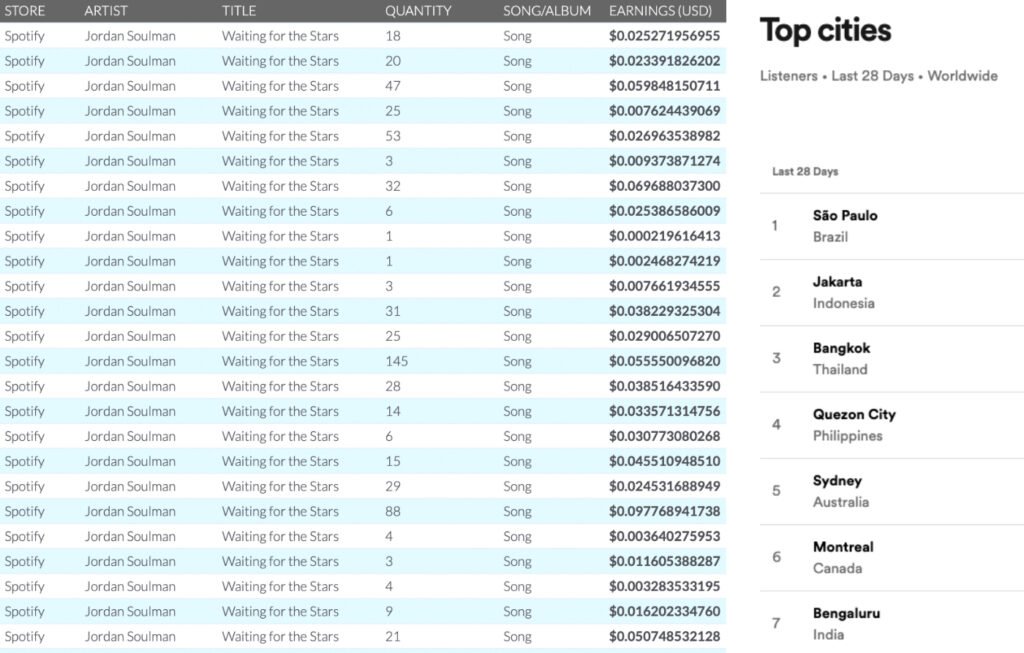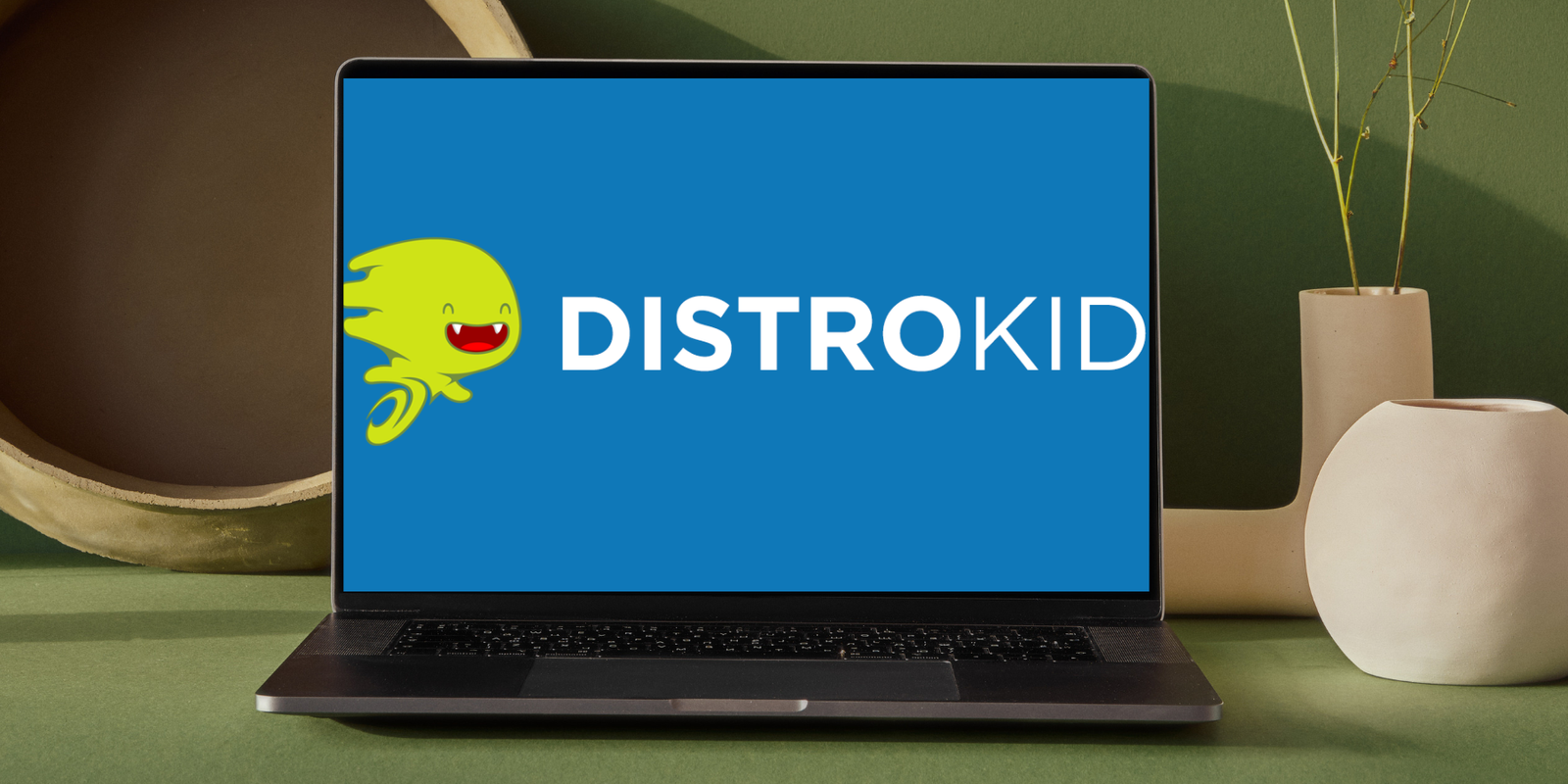
In 2023, Spotify is still the leading platform for streaming music and it allows tens of thousands of artists to make a living from their songs. If you are a musical artist that is considering using Spotify to promote your music and you want to know how much you would make, then this article is for you.
I am an official and verified artist on Spotify and I will tell you exactly how much I make as well as give you a breakdown on what determines how much an artist gets paid. You can use the data and information provided to figure out for yourself if it is something you want to pursue or avoid.
Every Artist on Spotify Earns Something Different
Contrary to what you might think, not every artist makes the same amount of money from their music on Spotify. What you make per stream can depend highly on several different factors that we will explore and discuss.
Geography

The country that your fans are listening from is extremely important when it comes to calculating streaming royalties because advertisers will pay based on location. If you have a lot of streams coming from Tier 1 countries such as the America, the UK, or Australia, then you will likely make more money than if you had more fans listening from countries such as Brazil, Philippines, or India. While this may sound shocking at first, there is a logical reason behind it. The more developed a country is, the more that consumers are willing to spend on products and services, making them more desirable for advertisers to target. Whether you like it or not, It’s a case of simple economics.
Spotify Stream Royalty Splits
More often than not, artists are working with other industry professionals to finish and release their songs, which means that they will usually have to pay a percentage of how much they earn when they are uploaded to Spotify. It is not uncommon for a producer, mixing engineer, mastering engineer, as well as your record label or marketing team to each get a cut of the revenue that your song generates. This results in a huge pay cut, causing a lot of artist to only receive about 50% of the total revenue generated from streaming platforms. This is why taking the time to learn how to be more in control of the music process can benefit you significantly in the long-run.
I personally receive 100% of my royalties because I write, record, produce, mix, master, and market all of my own music. Now you would think I make a lot because of this right? Well, sadly for me, you should think again.
Over the last 5 years or so of releasing music on Spotify, I have averaged roughly $2.00 per 1,000 streams. This means that I only make $2,000 for every 1 million streams I get. A lot of this has to do with the fact that a majority of my fanbase are not listening from tier 1 countries. If someone were to only have tier 1 listeners then they would likely make between $3 and $4 per 1000 streams.
Additionally, Spotify is known for paying far less for streams than almost all other streaming platforms, including Apple Music, YouTube, etc. The average amount that Spotify pays per stream is $0.003 and if you are lucky you can get up to $0.005. Maybe one day things will change and artists will be in a better position.
What The Data Says

As you can see most of my recent listeners are not coming from tier 1 advertising countries. I have also displayed some of my song revenue data to show just how little you make per each individual stream. This hopefully gives you a better idea of how many streams you need to actually make a living from streams.
But this is not the end of story. Now that we have discussed the direct ways an artist makes money on Spotify, let’s talk about the indirect ways.
Selling Merchandise Through Spotify
One of the biggest ways that Spotify can allow artists to make a living is through selling merchandise and playing shows. Spotify allows you to attach your merchandise store directly to your platform because they have a partnership with Shopify. This allows artists to sell print-on-demand products right next to their music with no excessive additional costs.
Playing Live Shows
Because of the audience and fans that Spotify can help you build organically, it opens the opportunity to play live events to add to your income. Spotify’s advanced algorithm recommends your music to new listeners with the same taste for your genre and overall vibe, which is amazing for gaining new fans and supporters of your music. Similar to merchandise, Spotify also notifies fans when an artist has live shows in their area directly on the app.
If you release music consistently and do your best to market and promote each single, then you can start building a solid fanbase that will want to buy your merchandise and show up to your live events. This can take years so you have to be in it for the long-haul. At the end of the day Spotify is just a tool for musical artists not the end all be all. I think a lot of people, including myself sometimes, tend to forget this fact.
Final Thoughts
As you can see, the inherent value of allowing your music to be placed on Spotify is not based solely on streaming royalties. There are numerous ways that you can benefit indirectly from gaining fans through the platform. However, If you look at it simply based off of streaming revenue then you could easily lose hope because of the sheer number of monthly plays you would need just to make a full-time income.
I hope this has helped you have a better understanding of how much artists make on Spotify.
Follow our blog and join our email list for more free resources, information, and tools to help you succeed in the creative world.
Author
Jordan Soulman is a singer-songwriter and audio-engineer that has been in the music industry for over 7 years. He has released over 30 songs, gaining millions of streams across Spotify, YouTube, and other outlets.

Crackling Fire Sound Effect
A cozy high quality recording of a crackling fire in stereo. Download this royalty free sound effect and use it however you like. Full length is 55 seconds.
Preview this file:

Babbling Brook Sound Effect
High quality recording of a fast moving stream, great for many background settings! 30 seconds long.
Preview this sound:

Walking Next to a Stream Sound Effect
High quality audio of someone walking next to a flowing stream. 16 seconds long.
Preview this sound:

Cricket Sound Effect
High quality recording of a cricket chirping at night. 51 seconds long.
Preview this sound:

Relaxing Fireplace Sound Effect
Download and enjoy this relaxing fireplace royalty free sound effect. Full sound effect length is 56 seconds.
Preview this file:

Soothing Rain Sound Effect
A high quality royalty free recording of soothing rain that you can use to sleep or as part of a bigger project. The full sound effect length is 1 minute.
Preview this file:




